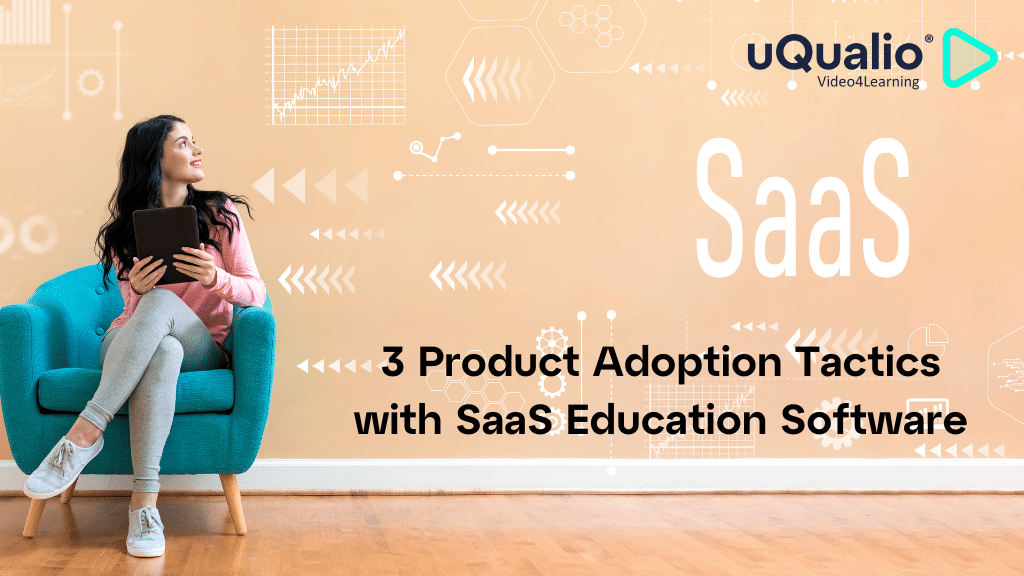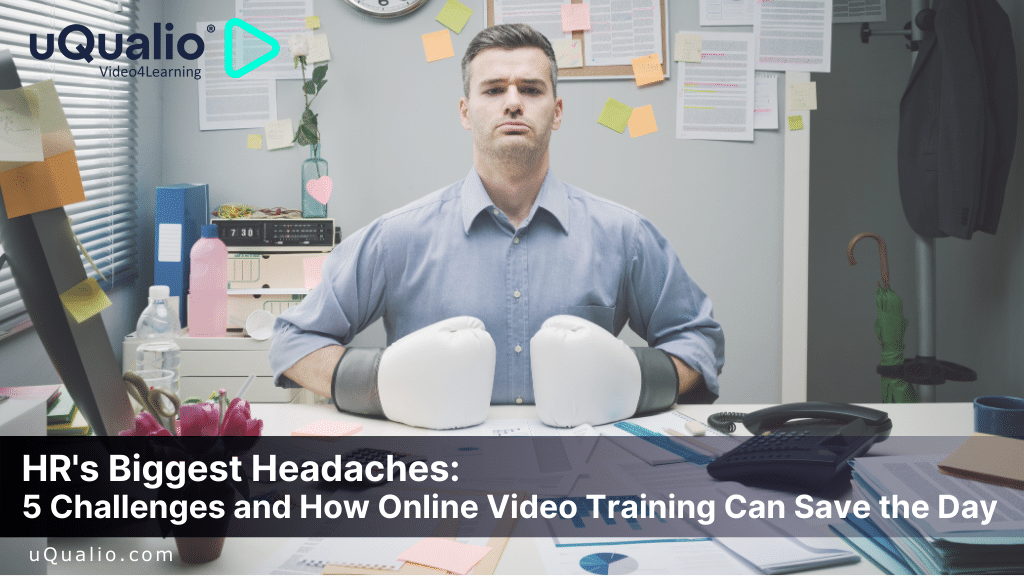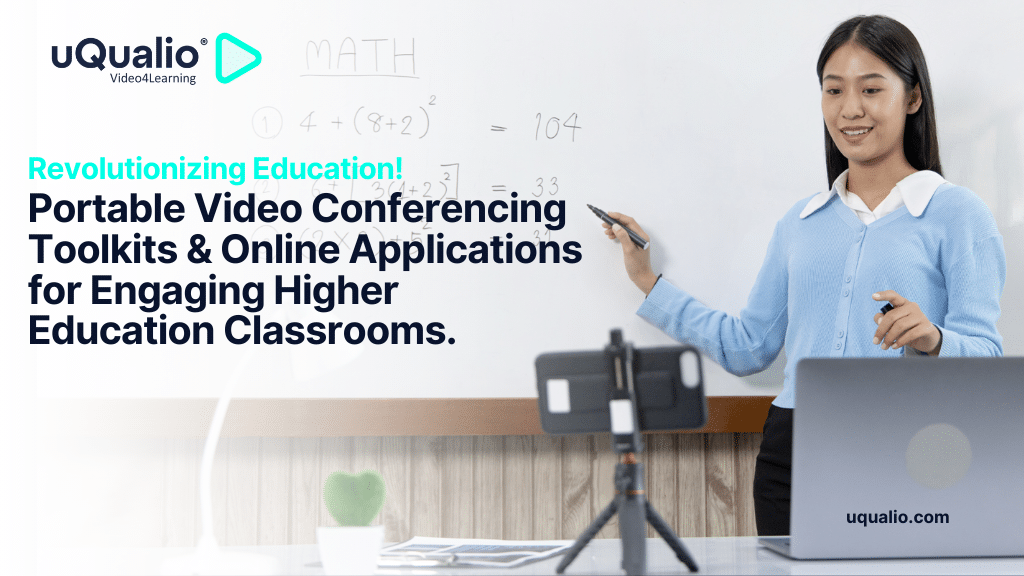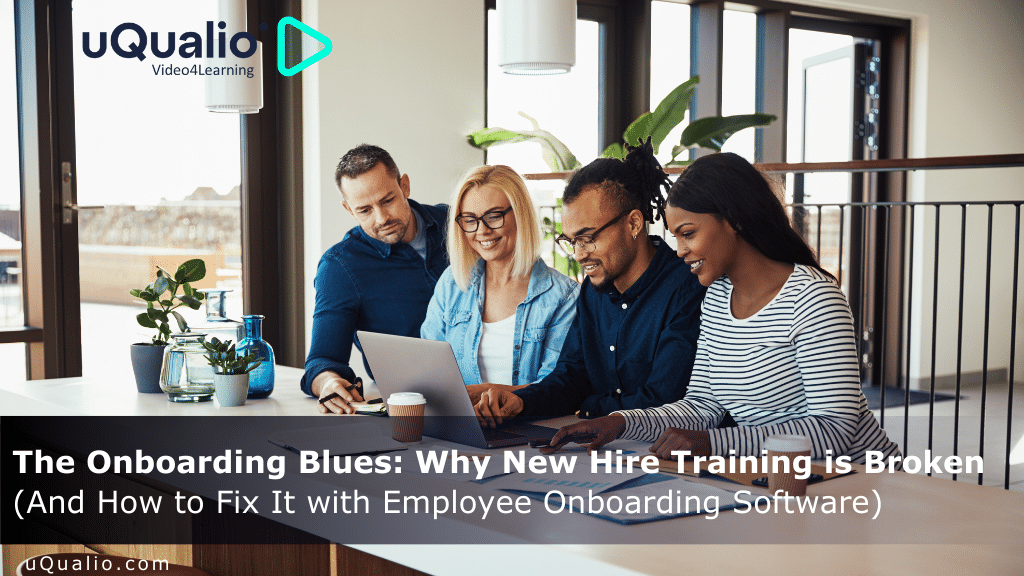Companies are failing at implementing quality learning.
“Many companies assume that employees will complain if too much time is spent on a topic or skill development area, but in reality, employees often complain that they didn’t have enough time in a training program to understand the concepts and internalize the skills fully.”
uQualio, the maker of your favorite video eLearning creation authoring software, recently had the opportunity to sit down and chat with Stephanie S. Mead, from CMOE (Center for Management and Organization Effectiveness). Today we’re going to talk with Stephanie about how to design tier-one corporate training programs.
Let’s jump in!
Interviewer: Hi and thank you for joining us today. Let’s jump into the interview by having you tell us a little bit more about the main reasons why companies approach you to help with their learning and performance improvement needs. In most cases, what are their biggest pain points and what do you do to help solve them?
Hello and thank you for allowing me to share some thoughts and ideas with you today. At my company CMOE (the Center for Management and Organization Effectiveness) we work with companies of varying sizes and across many industries, so I see challenges of all types. But across all organizations I work with, one of the biggest and most consistent pain points companies experience is that their front-line leaders and mid-level leaders lack the critical leadership skills needed to engage today’s workforce and drive results for the organization. Many organizations struggle to build and execute a learning and development strategy that addresses the skill gaps, which then causes leaders to experience high levels of stress and stagnant results, not to mention low levels of engagement in the people they lead.
To help address this problem, we partner with organizations to develop a plan for elevating the specific and relevant capabilities of their leaders and provide targeted learning and development solutions to address the gaps.
Another common pain point for many organizations is not achieving the business results they desire because there is a lack of alignment and effectiveness in the senior team or other key teams in the organization. Many teams confront a variety of challenges and problems are left unaddressed or unresolved these challenges limit an organization’s long-term success and consume time and precious resources.
At CMOE, we utilize a process that helps teams:
- Identify high-priority operational and strategic opportunities for improvement.
- Collaborate on solving the challenges by opening lines of communication.
- Developing individual competencies that will help the team drive change and improve performance.
I would also add that many organizations find it challenging to get leaders at all levels to think and act strategically. What organizations need is for everyone—particularly leaders—to anticipate and drive change that will help the organization be more competitive, and to develop the skills and foresight to solve tomorrow’s problems today. If an organization is to be successful over the long run, leaders and team members must be able to think, plan, and act more strategically on the front lines of work.
Interviewer: It’s interesting that a company would not immediately blame HR or fault their own hiring processes when employee performance is brought into the spotlight. Instead, many of the companies you work with believe the people they have are the right people, but their internal processes and training systems need to be improved to get as much out of those people as possible. But I’m sure you see HR as playing a vital role in this process. Can you tell us a little bit more about your work as it relates to dealing with HR departments?
You’re right, HR does play a vital role in this process. HR departments need to have a pulse on the short-term issues and business dilemmas the organization is facing, as well as its long-term mission, vision, and strategy. There must be a strong linkage between what HR is providing and how that adds value and assists the organization in executing the strategy and addressing gaps in performance.
Without clarity and alignment around where the business is going, what challenges it is facing, and what employees need to do to be successful, HR professionals won’t be able to effectively deliver what the organization needs in terms of performance improvement strategies.
It is essential that HR professionals actively gather data, talk to leaders in the business and understand exactly what management is trying to accomplish and the skills and knowledge needed in the workforce. As we partner with HR departments, we too seek to understand the organization’s strategy and how we can support the HR department with performance improvement solutions that align with the short and long-term needs of the organization.
Interviewer: Your end goal is to improve the performance of an organization’s people and operations. When you enter an organization, what strategies do you use to find bottlenecks in learning or performance?
There are many ways to go about it, but being data-driven is very helpful. One-on-one interviews are a mechanism for getting insights into the bottlenecks occurring in both learning and performance results. Interviews need to be done extremely well in order to get below the surface issues and understand what the root causes really are. Capability assessments, surveys, and questionnaires are also beneficial in gathering data about what people perceive are the critical needs for learning and development as well as used for identifying other bottlenecks standing in the way of better performance. When gathering data, particularly to understand learning and development needs, I believe it is important to triangulate and receive input from a variety of perspectives, including what learners believe their learning and development needs are, as well as the leaders of those learners, and also what stakeholders think. It can include internal stakeholders as well as external stakeholders like customers, users, or clients. There is tremendous value in having multiple perspectives.
An often overlooked source of information about learner and business needs comes from trainers in the organization who have a unique perspective on the needs and capability gaps within the organization and typically have a sense of the real challenges leaders and individual contributors are facing as they execute the work.
In my work at CMOE, I find that careful analysis of key metrics and KPIs is another effective tool for identifying bottlenecks in performance. Ultimately what is most important is that learning and development initiatives are linked to and a solution to bottlenecks and capabilities that will help the organization achieve excellence.
Interviewer: In your opinion, what are some of the most common mistakes that companies make with employee training programs?
The most common mistake I see is when organizations don’t get buy-in and support from leadership for employee training programs. I have seen organizations waste significant resources by not getting buy-in for the programs and initiatives being rolled out. Organizations that do this successfully will give leaders exposure to what is being delivered in employee training programs so they can play a significant role in ensuring transfer and sustainability occurs as well as a model of what is expected.
Many organizations make the mistake of not having strong application and sustainability strategies in place when employee training programs are deployed and behavior change becomes short-lived. We work closely with our clients to pinpoint how leaders will be enrolled in the sustainability process as well as strategies and tools that will help employees build on their learning.
Another common mistake is when organizations fail to do a needs assessment that will identify the high-priority development needs and then ensure that employee development programs are focused on skills development vs. awareness building. Ideally, employees should be given the opportunity to develop skills through practice.
Interviewer: In your experience, what are some of the biggest complaints you hear employees have about their company’s training programs?
A program not being relevant and linked to the actual work an employee does and the real challenges they face is the biggest complaint I hear. So, customizing training programs to meet the unique needs of a learner and the situations they find themselves in on a daily basis is the most important factor in avoiding this issue.
Also, many companies assume that employees will complain if too much time is spent on a topic or skill development area, but in reality, employees often complain that they didn’t have enough time in a training program to understand the concepts and internalize the skills fully.
Interviewer: Beyond being linked to an effective training program, I would imagine that an employee’s performance would be linked to the much broader company culture as well. Can you tell us a little bit more about the intersection where corporate training and company culture meet? How do you address friction between training and culture?
Fundamentally, to avoid friction between training and culture, training must align with, reinforce, and support the company’s culture and espoused beliefs. To do that, organizations need to be very clear about what the company’s culture looks and feels like (or should look like and feel like) and what employees are expected to do to create that culture. Then training can become the mechanism for building or maintaining the culture. In my work with clients, we connect training topics of all types with the values and beliefs of a company and help employees see how the skills they are developing will build a culture of excellence.
Interviewer: You see people as an organization’s most valuable asset. Your job is to help improve that asset. What other things outside the world of training help organizations improve people as an asset?
One-on-one coaching, in formal and informal situations, is the most important tool in maximizing talent and helping people improve, grow, and develop. Organizations with leaders who consistently engage in coaching conversations about performance improvement opportunities, as well as development opportunities, are far more successful at engaging employees and driving bottom-line results. Numerous studies have shown that people tend to leave companies because of their boss rather than the company itself. The antidote to this problem is simple… leaders need to be coaches. This is how they can unlock the workforce’s potential and build a culture where people want to stay.
A few other strategies worth mentioning include recognizing the efforts and results of employees, providing ongoing development opportunities, and providing a clear line of sight about career paths and options. Employees want to understand how they can provide value now and over the long term.
Interviewer: What are some examples of great companies that invest heavily in the education of their employees? What do you believe makes their employee training programs so effective?
Companies that invest in the training and development of their employees have higher levels of employee satisfaction and bottom-line performance that can be sustained. In these companies, employees and leaders are more satisfied because they feel that their company is investing in their success, which is especially important to the modern workforce. In the companies I have observed and worked with, people are able to respond to setbacks and obstacles more effectively when there is a robust emphasis on education and development in the organization. They just seem better equipped to handle all types of situations. I also have observed that people are better equipped to manage change, adapt, and grow as the organization makes strategic shifts to stay competitive and on the leading edge.
Interviewer: You have a blog post called “Gaining a competitive edge through eLearning”. What mistakes do many companies who put together employee training packages in-house make? I ask this question because many of the companies who create online learning material might be subject matter experts but lack a background in pedagogy. Taking this into consideration, how can companies maximize the impact of their online training courses?
One of the biggest mistakes companies make when creating online training is not implementing quality teaching and learning processes through a theoretical foundation such as Bloom’s taxonomy. Bloom’s taxonomy, consisting of six levels of learning is accepted internationally as a quality pedagogy for teaching and learning. The six levels of Bloom’s taxonomy are: Remembering, Understanding, Applying, Analyzing, Evaluating, and Creating. When creating content companies can ask themselves, Can the student recall or remember the information? Can the student explain ideas or concepts? Can the student use the information in a new way? Can the student distinguish between different parts? Can the student justify a stand or decision? Can students create a new product or point of view? These questions link to the levels in Bloom’s taxonomy and can be the cornerstone of an impactful online learning course. It is crucial that designers of eLearning content, as well as instructor-led programs, understand the needs of adult learners. I also believe that training content that is backed by research and skill-oriented has a much greater impact on the development of employees and the performance of an organization. It isn’t always easy—but it is important for organizations to get this right.
Thank you for giving me the opportunity to share some thoughts about my experience working with organizations and strategies for maximizing learning and development.
Interviewer: Thank you for taking the time to chat with uQualio® today Stephanie. It’s been enlightening.
To our readers, if you’d like to learn more about CMOE and the work they do, you can check out their website here cmoe.com.
You can also learn more about how our video eLearning platform can help you with your training needs by checking out our corporate training site.
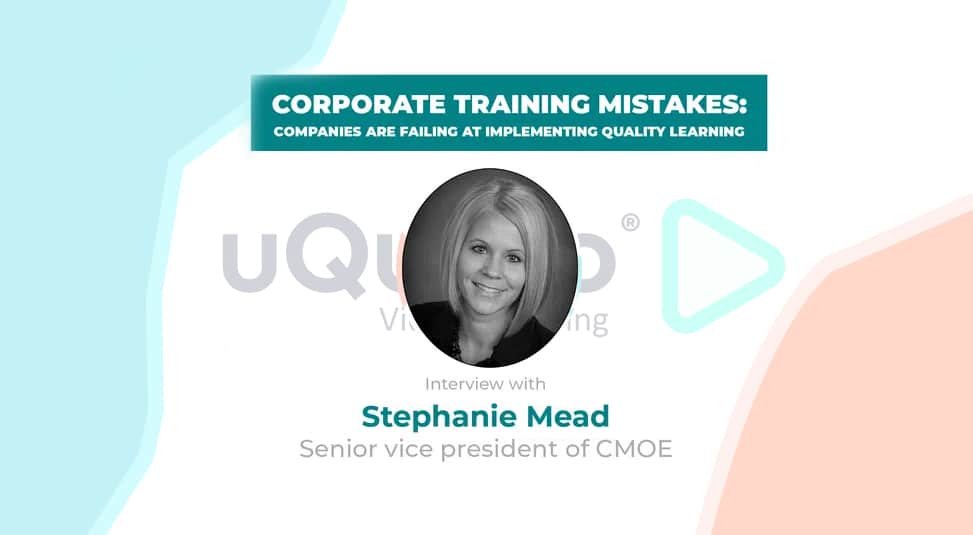
Achieve Effective & Affordable Video Training
– uQualio is an award-winning, easy-to-use, all-in-one NextGen LMS software for any types of online video training.





